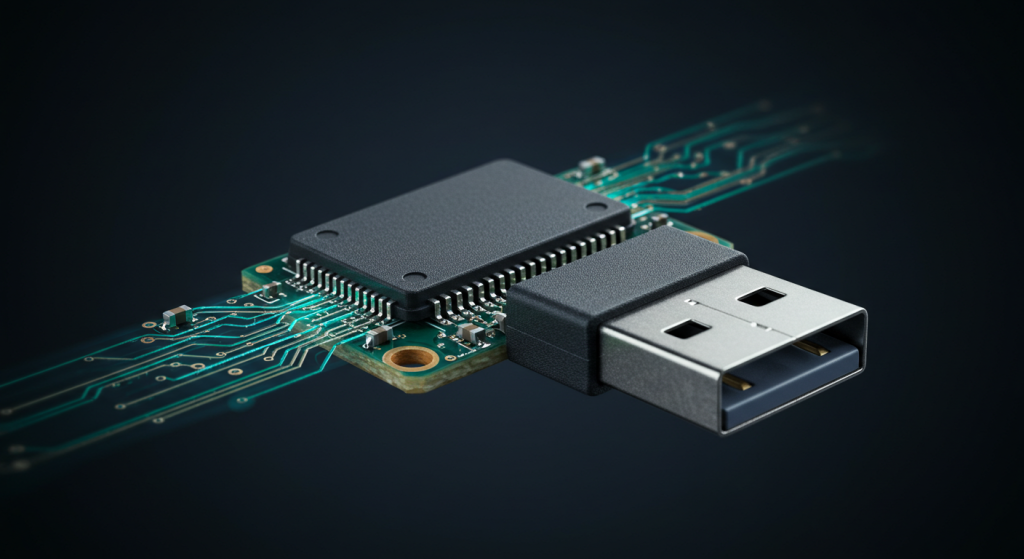What are the Different Types of USB Connectors? Detailed Guide
Comprehensive Overview of USB Types and Connectors
In today’s world, USB connectors are very important. This is because almost all electronic devices require some form of power supply or data transfer, like charging a phone or connecting a peripheral. What are the different types of USB connectors? There are multiple forms of USB connectors. This guide will provide information on the variances as well as the specifications of the USB connectors.
Understanding USB Connectors: A Detailed Guide
USB connectors not only have immense significance, crediting their use in powering, connecting peripherals, and storing data, but also need to be understood thoroughly. Failing to learn the ample variations of USB connectors and their types can lead to complications in selection and failure for devices to work efficiently. This guide provides a deep analysis of USB connector types with appropriate descriptions as well as USB connector placement.
1. USB Type A
As with other varieties of USB ports, Type A USB sockets are also found in the form of flat, rectangular-shaped Standard-A ports, which are available on Desktops and Laptops, while USB Type A sockets are located on TVs, mobile phone chargers, and peripherals.
Important Characteristics:
• Supports USB 1.1, USB 2.0, USB 3.0, and USB 3.1.
• Functions with mouse, keyboard, flash drives, as well as hubs
• Data transfer is possible up to 10 Gbps (USB 3.1 Gen 2).
2. USB Type-B
Also referred to as USB-B, these connectors are Square with beveled edges. Mainly used for attaching big peripherals such as Printers and Scanners, mobile computers may have numerous ports attached through USB hubs, allowing the connection of multiple peripherals.
Variants:
• Standard B Plug is a USB 2.0 Standard USB-B
• Type B USB 3.0 has extra pins for data transfer.
3. USB Type-C
It is the most advanced connector type and the last one released. This type is reversible, whereby it can be connected on either side up. These ports allow the highest possible data, power, and video output transfer.
Key Features:
• 40 Gbps (USB4)
• Powers of up to 100W using Power Delivery.
• Applies to tablets, smartphones, laptops, and so forth.
• Supports devices using Thunderbolt 3 and 4.
4. Micro USB
Micro USB is a more compact form of the connectors discussed above. It is primarily used in older-model mobile phones, Bluetooth devices, and power banks. Android smartphones were using this standard in the past.
5. Mini USB
This port, which is slightly bigger than Micro USB, the Mini USB, was used for some models of digital cameras, MP3 players, and external hard drives.
6. Advances in USB Technology and Their Functions
When accessing the different ports inclusively with the USB functionality, their relevance to interoperability is also worth mentioning:
• USB 1.1: 1998 marked the year of its release, and it claimed 12 Mbps as its maximum data transfer rate.
• USB 2.0: released in 2000(best effort transfer rate – 480 Mbps
• USB 3.0: Released in ’08, increased the claimed transfer rate to 5 Gbps
• USB 3.1: Released in 2013(up to 10 Gbps Data transfer)
• USB 3.2: Released in 2017 – is rated for a maximum of 20 Gbps.
• USB4: Announced in 2019, it has a transfer speed of 40 Gbps and also incorporates Thunderbolt 3 compatibility.

Selecting the Appropriate USB Connector
In all cases, a correctly optimized USB connector enhances the transfer, charging, and peripheral device connection experience. Below are some of the most crucial elements you need to consider before picking out a connector:
1. Compatibility With the Device
The first step in the comparison is ascertaining if the USB connector matches the device’s port. The popular Micro, Mini USB, as well as Type A and Type C connectors, are widely known. Recently, most smartphones, tablets, and laptops are equipped with USB-C ports. Obsolete devices are likely to have Micro or Mini USB sockets.
2. Expected Value for the Rate of Data Transfer
Determine the requisite data transfer speed. Use USB cables 3.0, 3.1, and even USB4 for swift transfer of large files. The data transfer speed for these is between 5 Gbps to 40 Gbps. Primary tasks, like basic charging or syncing small files, can be done with older versions like USB 2.0, as they don’t require high speeds.
3. Power Delivery
When selecting a charging cable, make sure to check that it satisfies the power delivery specifications of the device. As an example, USB-C PD cables can deliver up to 100W, making them useful with laptops and other high-powered devices. Conversely, USB-A to Micro USB would just be ‘sufficient’ for smaller devices.
Why Choose Us- HANXIA?
- There is a sense of trusting us. Serving the manufacturing sector for over eight years has taught us to pay keen attention to prices, professional service, and unquestionable quality. We take pride in helping over 3625 enterprises, many of which are listed companies.
- Our fast production capabilities ensure we meet a regular lead time of 2 to 6 working days for standard goods. These claims permit us to provide 0.5 million quality goods per day. Because their trust in us is not misplaced, mark our innovation and quality claim by all our premium products, including those guaranteed with CE, REACH, and ROHS2.0 certifications, and holding utility patents.
- On-site technical inquiries are addressed, and a no-reason standard goods return policy of 90 days is maintained. Furthermore, we are thankful for and anticipate any volume of customized orders, mid-tier or otherwise, and stand ready to support you in growing your business confidently.
Conclusion
To maximize the criteria of compatibility, performance, and functionality across devices, it is best to understand what are the different types of USB connectors are. Understanding these connectors aids decision-making pertaining to requirements needed for inter-device connections, which is relevant as technology advances. For more details, visit HANXIA.